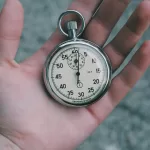Recently, the circular economy idea has become rather well-known as a novel and inventive way to reach long-term growth. Since people value the surroundings more and more, this approach offers us a way to control the growing problems with waste and resource management. Still, what is a circular economy, and why is it seen to be so important for long-term growth?
The Eco-Friendly Economy‘s Mechanism
A circular economy is a way to grow the economy fit for people, companies, and the surroundings. The benchmark linear economy operates under a “take, make, discard” model. On the other hand, a circular economy tries to control natural processes, eradicate waste and pollution, keep objects in use, and substitute others for them.
This paradigm advances new ideas in production, design, and product application. Less damage to the earth follows, and new business opportunities open themselves. It seeks to preserve separate economic growth separated and independent consumption of resources. This is thus really crucial for promoting long-term growth.
The operations of the circular economy
Three basic ideas help to explain the circular economy:
Waste and pollution are built-in in a circular economy; items are designed with thought for their ultimate use when their useful lives is over. This suggests that materials and items are chosen and produced from the start such that waste and pollution are generated in the least possible degree. Companies might design readily breakable goods or employ materials that disappear on their own to allow for recovery or use.
The circular economy counsels people not to throw away goods they no longer find use. Recycling, repairing, reusing, and fixing enable one to help to make things better. Longer lifetime helps the planet and lessens the demand for new natural resources.
It stresses the need of maintaining natural systems as well as of their repair and restoration. Composting food waste will help to improve the soil and enable the growth of farms.
Which long-term evolution will affect the circular economy?
Implicit in sustainable development is what? It means meeting present requirements without sacrificing the capacity of later generations to follow in the same line. The circular economy—which strives to maximize resources—reduce waste, and have as least of an impact on the world as possible is appropriate for this goal. The circular economy helps long-term development in the following ways:
-
Using the tools in suit
The fact that the linear economy depends on few resources is among the main flaws of it. Needs for raw materials will follow world population and consumption. The circular economy helps to solve this problem by guiding sensible use of resources. Reusing, reworking, and recycling assist one to make greater use of objects. This suggests that we actually need less freshness.
Some groups, like the Ellen MacArthur Foundation, want to see businesses rethink their manufacturing, design, and application of materials as they strive toward this. This helps to preserve resources and lessens the damage raw material gathering and processing does to the earth.
-
Cutting waste
Those living in a straight economy most of them view garbage as something produced and consumed. On the other hand, a circular economy sees garbage as something that can be found once again or recycled. We have to rethink how we see trash if we want to reduce the volume of waste ending up in landfills and the ocean, where it compromises the environment and causes pollution.
An economy free of waste is sought for by a circular economy. Products and processes should be created to minimize waste from the start, therefore lowering their impact. From production to disposal of products, the initiative promotes strategies meant to lower waste at all levels of the value chain. Recovering and recycling goods helps the earth as well as open new business opportunities.
-
Creating new job and increasing the GDP
Furthermore very helpful for the economy is turning to a circular economy. By using circle approaches, businesses could save money, increase productivity, and create more income. One way businesses may get extra money is by selling used goods or offering services like leasing commodities or fixing items.
Longer-lasting goods, recycling, remanufacturing, and its principles help to find use for all kinds of products. The World Economic Forum projects that the circular economy might generate far more job opportunities. These jobs would be in industries like material management and environmentally friendly manufacturing.
-
Efforts to slow down temperature change
Climate change is right now one of the most important issues the earth has to deal with. Successful development of the circular economy depends on lowering greenhouse gas emissions. This will help considerably to slow down world warming. Encouragement of renewable energy, waste reduction, and better use of resources enables it to lower the carbon footprint of economic activities.
In the circular economy, materials are kept in use instead of being disposed of, therefore reducing the demand for new raw resources. Among other things, this can help lower the emissions from mining, transport, and manufacturing. By storing carbon and restoring wild areas, green solutions include reforestation and sustainable farming help stop climate change as well.
Looking from the Green Economy, what comes next?
Among people seeking long-term development at a time when environmental issues abound on the earth, it is growing increasingly appealing. Moving from a straight to a circular economy is becoming more and more important for governments, businesses, and societies.
But everyone has to work together and create new ideas if we are to achieve the transformation to a circular economy. Policymakers should follow guidelines and benefits to design surroundings fit for business. Businesses should also follow eco-friendly policies; people should change their consumption to show more responsibility.
Should everyone cooperate, the business will be better for the earth as well as for everyone.
Having stated this,
The circular economy does not have any such pattern. The circular economy instead represents a significant shift in our consumption, manufacturing, and disposal of products. If we want to enable long-term development and safeguard the planet for next generations, we have to think this way.
Applying circle approaches by more businesses, governments, and individuals will assist to raise the standard of living and business environment everywhere.









